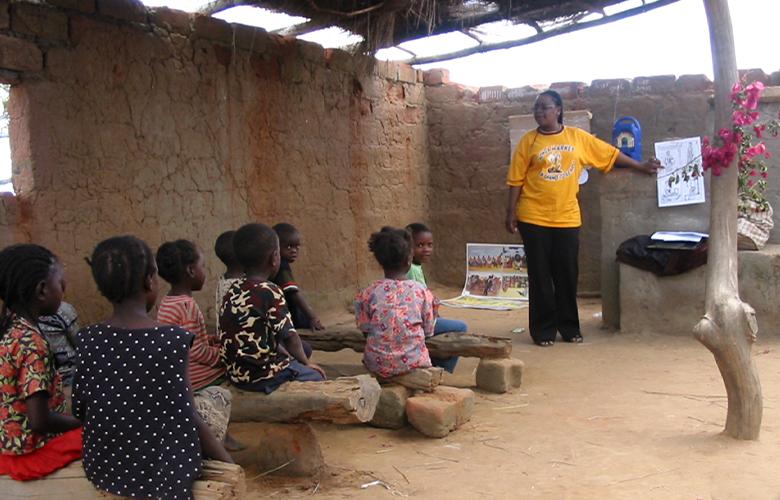
One day 20 years ago, I found myself in Zambia standing outdoors under a blazing sun. On that day—to my surprise—the full power of education by radio hit me right between the eyes. I had faithfully followed the international success of interactive radio instruction (IRI) since it began in Nicaragua in the seventies. Still, I was unprepared for what I was seeing.
I was watching colleagues from EDC and our Zambian partners pilot a radio lesson with primary school-age children. These children were unable to attend regular school. Many schools across Zambia had been forced to close because teachers had been lost to HIV/AIDS. The children were engaged in an English lesson. They were on their feet, listening, singing, shouting—and learning. The makeshift classroom could accommodate only so many children. Others stood outside, pressed against a fence, trying to join the action. It was noisy and chaotic. However, subsequent evaluations showed impressive learning outcomes.
Fast forward to the present as we face the scourge of a new virus. This one is keeping children at home to carry on with their education. And again many developing countries are turning to radio to reach these learners. However, with the advent of new technologies, the validated IRI model has morphed into a version called interactive audio instruction (IAI), where “radio” is no longer tethered to the constraints of broadcasting. What is consistent in the new version is that the proven principles for successful learning through radio/audio are being followed.
Today, I remind myself that science is providing our best hope for a way out of the current pandemic. In the seventies, it was science at work in Nicaragua that transformed educational radio from a weak supplement of classroom instruction into the powerful tool for learning that it has become.
In the years ahead, we will witness epidemics, disasters, and conflicts. Countless children will be forced to leave their classrooms and learn at home. To be better prepared, we need to refresh the science. We need to make the investments required to build upon the IRI/IAI legacy. We need to put science to work to more deliberately address the specific challenges of children learning at home when disease or violence grips their communities. Such will be my thoughts this February 13, World Radio Day.
Have you had experience with IRI or IAI? Please share with us.
| Stephen Anzalone’s career includes 23 years at EDC working on the use of technology for education in developing countries. He also served on the President’s Advisory Council of the International Council for Distance Education and the UNESCO Director-General’s Advisory Committee’s Learning Without Frontiers Programme. |


Comments
Add new comment